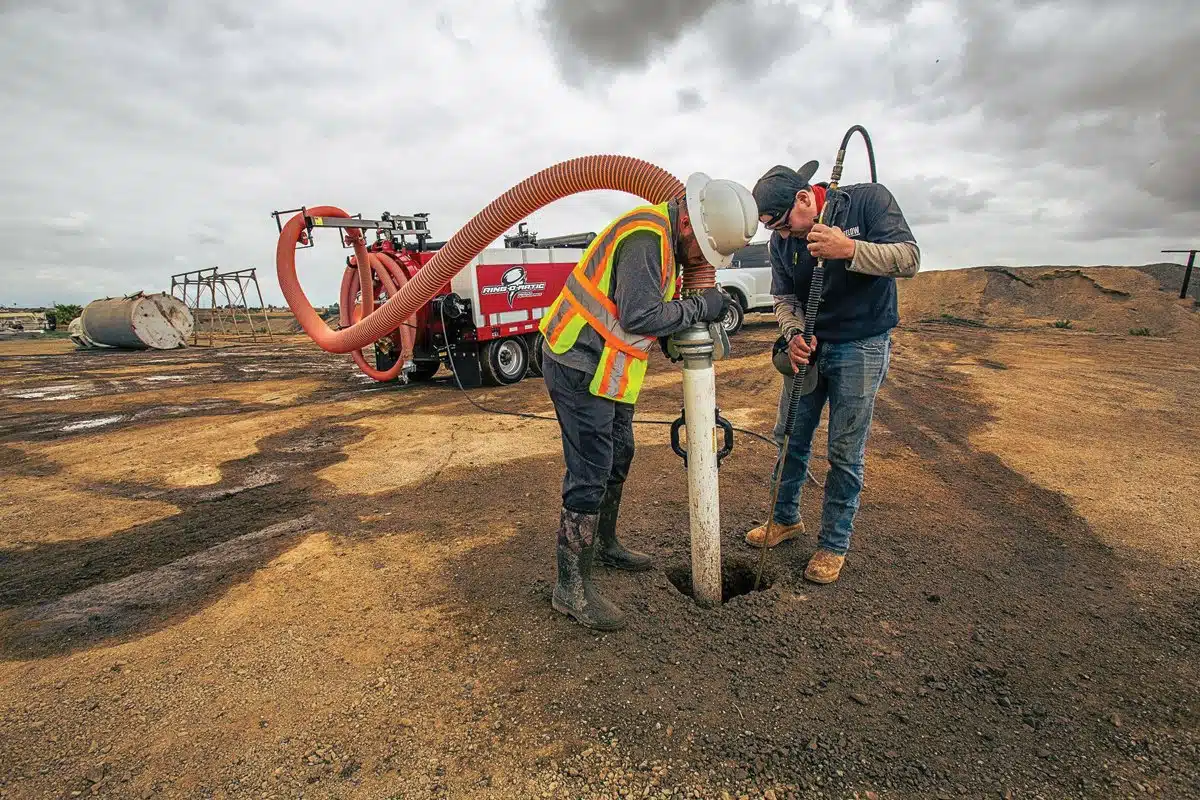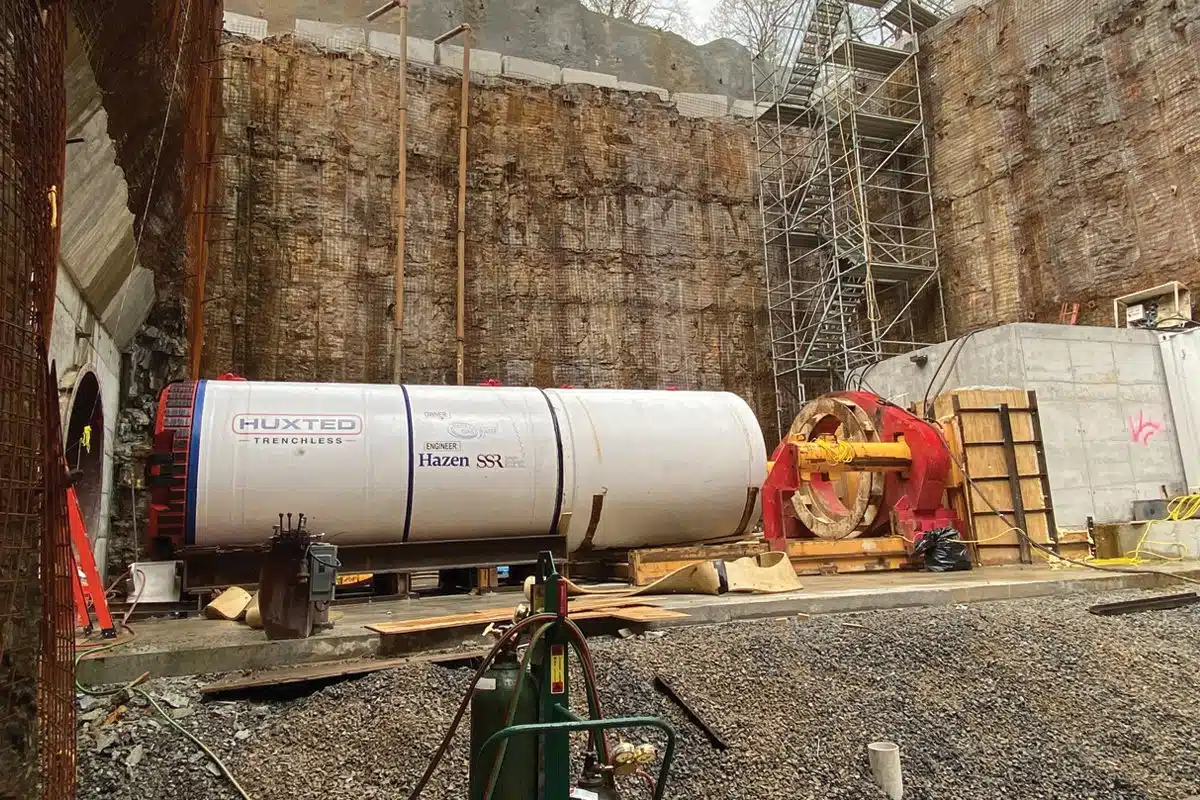
Raw Water Transmission Main Internal Cleaning Project Nets Big Return on Investment
De Soto, Kansas, is a small city southwest of Kansas City, with approximately 6,000 citizens. It was experiencing an alarming rise in pressure on a critical water main asset: an observed pressure increase of 70 psi on the raw water transmission main that traversed under the Kansas River, was a concern.
The City owns and operates the 16-in. ductile iron transmission main, that transfers raw water from a well field on the north side of the Kansas River to a terminating point on the south side of the river. It connects to a transmission main that transfers untreated ground water from a total of five active wells, three north and two south of the river.
The critical water main, supplies the water to the City’s water treatment plant and was constructed in 1960s by the Department of Army, as part of a Defense Department facility. The main has been in continuous operation since and had not been externally or internally inspected, except for valves and vaults that were easily accessed.
Cleaning the Pipeline
The rise in pressure was a significant issue and indicated potential problems within the pipeline, such as partial collapse of the buried pipeline, leakage under the river or blockages inside the pipeline. To address this issue, the City of De Soto contracted Ace Pipe Cleaning through the engineering consultant BlueWater Solutions Group, to perform an internal inspection to assess the overall condition of the pipeline.
Results of the inspection revealed the increase of pressure was due to build-up of sediment over 55 years of continuous service. The original pipeline assessment turned into a critical pipeline cleaning project. A new approach had to be developed to clean out the silty deposits from the well field that had formed within the pipeline.
To complete the cleaning from the well field and underneath the river, a lightweight Penetrator jetter nozzle was used. At first, utilizing a 190-gpm water-jetter truck seemed to be the answer to clearing away all sediments that had solidified in the raw water main. After 1,700 ft was cleaned and clear of sediment, the water-jetter truck reached a steep portion of the water main that went underneath the river. The change in elevation required more force to propel the jetting operations. To better clean the main, a larger 290-gpm water-jetter truck was brought in to complete the cleaning of the more difficult stretch under the river.
Pigging vs. Jetting
To successfully clean the remaining five-mile stretch of dual transmission pipelines from the south of the river to the water treatment plant, a change in the cleaning process was made by employing pigging instead of jetting for this portion of water main. Two different types of pigs were utilized, swab and disc style pigs. The swab pig is made of a light density, polyurethane foam and is flexible and easily degradable and easily maneuverable as a first pig launch in a pigging operation. The disc pig is much denser and is covered with a more durable polyurethane foam, molded with circular grooves to help remove the more stubborn pipe wall buildup and to maneuver any unknown bends, as there were no as-builts for the pipelines.
The original plan was to make two passes of each pig, to clean out each of the twin mains. However, after the successful pass of the first swab pig, the conclusion was that one of each style of pig would suffice. The cleaning of the twin pipelines was completed successfully after the two passes of pigging were completed.
As part of the project installations of the pig launching stations, the dual transmission mains were also un-manifolded to allow for continued water treatment when one of the mains was down for cleaning or maintenance. This new capability will assist with extending the life of this linear asset and to better manage the City’s water demands.
The results of the water main cleaning provided a great return on investment that will also assist with the continued use of these linear assets. The water pressure returned to operating pressures of 80 psi, back down from 150 psi. Water production capacity at the treatment plant increased from 800,000 gpd to 3 million MGD. This increase has allowed the City to consider an opportunity to sell excess water supply capacity to other communities in the Region.
In addition, plant operation during the high demand season has decreased from 24 hours per day to eight hours per day, helping to conserve energy and wear and tear on the water treatment plant equipment. The water main was found to be in such good shape, that it surpassed any remaining useful life expectation. Mixing processes have also been optimized thanks to the increase of process flow at the plant providing more efficient chemical usage. The continued maintenance plan of periodic cleaning, cost savings and additional potential revenue will provide continued and uninterrupted service for years to come for the City of De Soto.
Lisa S. Douglas, P.E., is vice president of the water services division of the Carylon Water Group. For more than 15 years, she has specialized in pipeline condition assessment technologies and consulting for both gravity and pressure pipe.
Mark Wade, P.E., is president of the BlueWater Solutions Group. He currently provides senior-level technology and project management oversight for a number of pipeline assessment and rehabilitation projects, particularly large-diameter conveyance systems, throughout North America.





